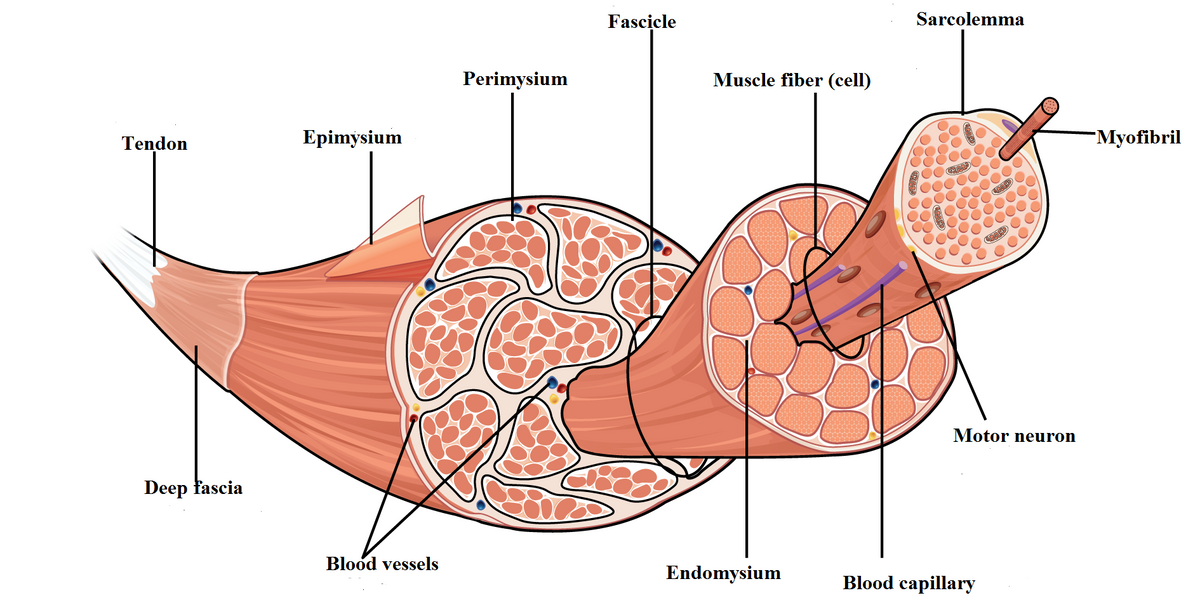Select the best answer or answers from the choices given: A fascicle is a (a) muscle, (b) bundle of muscle fibers enclosed by a connective tissue sheath, (c) bundle of myofibrils, (d) group of myofilaments.
Select the best answer or answers from the choices given: A fascicle is a (a) muscle, (b) bundle of muscle fibers enclosed by a connective tissue sheath, (c) bundle of myofibrils, (d) group of myofilaments.
In human body, muscular system is divided into three types- skeletal, smooth and cardiac. The function and the structure of each type of muscle is different from the other. When the nervous system receives the voluntary messages then the skeletal muscles attached to the bones cause movement of the bones by their contraction. The two bones across a joint are attached by the skeletal muscles.The motor neurons innervate the skeletal muscles. The skeletal muscle cells or fibers are made up of many nuclei and therefore are multinucleated, voluntary and striated in appearance.
The smooth muscles are not under conscious control and are therefore involuntary. The muscle cells are spindle in shape and consist of one central nucleus. The walls of the hollow organs present inside the body like blood vessels, gastrointestinal tract, urinary bladder, uterus are formed of smooth muscles. The walls of the arteries are also formed of smooth muscles which help in the movement of the blood through the body by their contraction and relaxation.
The wall of the heart is formed of three layers. The myocardium forms the middle layer which helps in the pumping of the blood by their contraction. The cardiac muscles are present in the myocardium. The cardiac muscle consists of a nucleus which is placed centrally. The cardiac muscle is also striated like skeletal muscle. This muscle is involuntary as it's not under conscious control.

Step by step
Solved in 4 steps with 1 images








